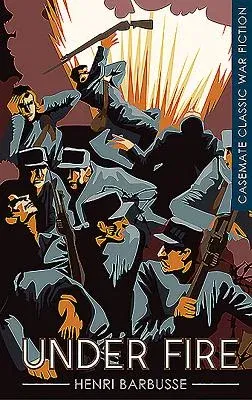Under Fire, first published in French as Le Feu, was one of the first
novels about WWI, appearing in December 1916, before the outcome of the
war was clear. Set in early 1916, it follows a squad of French volunteer
soldiers through the eyes of an unnamed foot soldier, who participates
in and also observes the action. It combines soaring, poetic
descriptions with the mundane, messy, human reality of soldiers living
in their own excrement. Then slowly names and features are given to the
men who emerge from the mud as the individual characters emerge, from
the dignified leader Corporal Bertrand, to the ebullient Volpatte and
the obsessive Cocon. Intermingled with details of how they navigate
daily life in the putrefied atmosphere of the trenches are both
harrowing descriptions and a political, pacifist argument about this war
and war more generally. Caught up in events they cannot control, the
soldiers go through their daily routines: foraging for food, reading
letters from wives and mothers, drinking, fighting in battle, and in
heavily realistic scenes which the novel is noted for, discovering dead
bodies in advanced stages of decomposition; the human detritus of a
brutal war. Through it all, they talk about the war, attempting to make
sense of the altered world in which they find themselves.
Under Fire drew criticism at the time of its publication for its harsh
realism, but won the Prix Goncourt. The original translation by
Fitzwater Wray which first appeared in 1917 is published here. It
captures the essence of the era; a glossary is also provided to help
with unfamiliar vocabulary.

